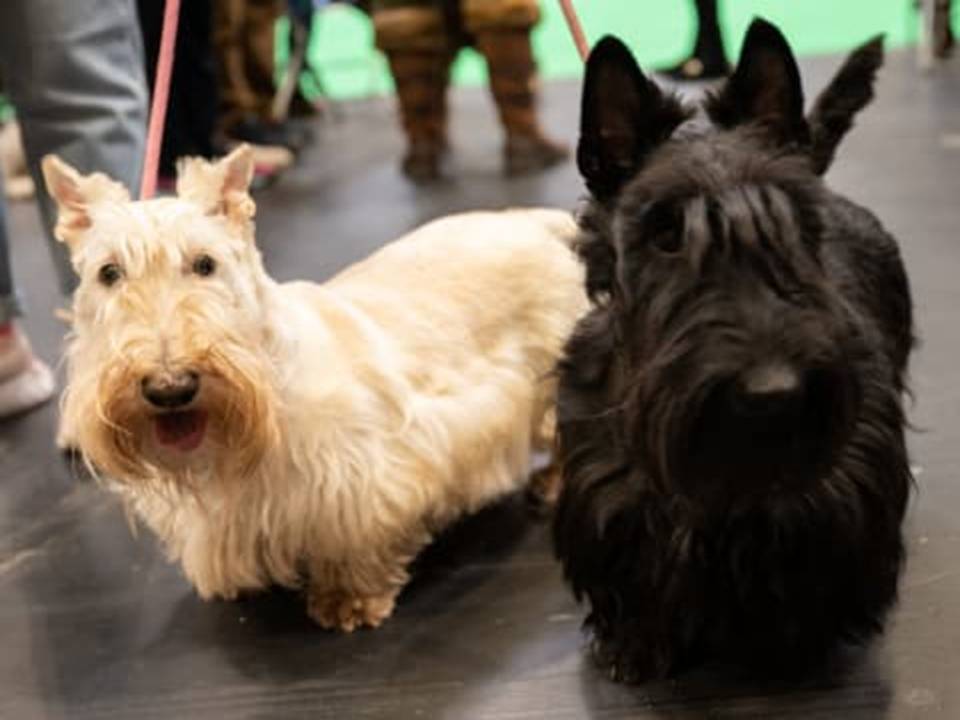The Scottish Terrier Also Known as Scottie
The Scottish Terrier, also known as the “Scottie,” is one of the most iconic dog breeds. People recognize it for its dignified appearance, wiry coat, and compact, sturdy frame. Beyond its looks, the Scottie has a rich history tied to Scotland, its country of origin. Originally bred to hunt and eliminate vermin, Scotties have become beloved pets and symbols of loyalty, intelligence, and resilience.
Ancient Roots and Early Development
The exact origins of the Scottish Terrier remain somewhat unclear. Many experts believe the breed has existed for centuries, possibly as early as the 15th century. Scotland’s rugged landscape and harsh climate were home to various terriers. These dogs served practical purposes, mainly hunting and pest control. The Scottish Terrier likely descended from a group of small, sturdy dogs found across the Highlands. People often called them “Earth Dogs” because they excelled at working underground to root out prey.
Farmers and hunters used early Scottish Terriers to control vermin like rats, badgers, and foxes. Their small size and fearless nature made them perfect for burrowing into tight spaces. These early terriers were not yet defined as separate breeds, but they shared traits with modern Scotties—tenacity, courage, and a strong work ethic. Their wiry coats protected them from Scotland’s rough weather, and their short, sturdy legs helped them navigate rocky terrain.
Emergence as a Distinct Breed
The Scottish Terrier began to emerge as a distinct breed in the late 18th and early 19th centuries. Before this, people often grouped various terriers together under names like “Aberdeen Terrier” or “Highland Terrier.” The Victorian era’s growing interest in dog breeding and classification helped standardize the Scottish Terrier.
A Scottish historian named Don Leslie mentioned small, burrowing dogs as early as 1436. In the late 19th century, Captain W. W. Mackie, a prominent breeder, worked to define the breed’s unique characteristics. He distinguished it from other terriers like the Cairn and West Highland White Terriers. Around this time, breeders started emphasizing consistent traits in coat, size, and temperament.

James E. Roper created one of the first detailed standards for the Scottie in the late 1800s. As dog shows grew in popularity, the need for an official breed standard became clear. In 1880, the Scottish Terrier Club of England formed, and the first Scottish Terrier appeared in a British dog show. The breed quickly gained popularity in Scotland, the UK, and beyond.
The Breed in the Modern Era
By the early 20th century, Scottish Terriers had become a well-loved and admired breed. Their distinct look—a wiry black coat, short legs, long head, and erect ears—was now well-defined. The breed also developed a reputation for its spirited, independent personality. Though originally bred for work, Scotties became popular as companions and show dogs.
The breed gained significant fame in the United States during the 1930s and 1940s. President Franklin D. Roosevelt owned a Scottish Terrier named Fala, who became almost as famous as the president. Fala often appeared with Roosevelt at public events and became a symbol of loyalty during World War II. This boosted the breed’s popularity in the U.S.
President George W. Bush also loved Scottish Terriers. His two Scotties, Barney and Miss Beazley, were often seen around the White House. These high-profile endorsements cemented the breed’s iconic status in American and British culture.
Temperament and Traits
The Scottish Terrier is known for its bold, dignified personality. Despite its small size, the breed has a big heart and a strong sense of independence. Scotties can be aloof with strangers but are deeply loyal to their families. This makes them excellent guard dogs. They retain a natural hunting instinct, a reminder of their working-dog origins. Even today, Scotties often show fearless behaviour, even toward larger dogs or threats.
Scotties typically weigh between 18 to 22 pounds. Their bodies are muscular and compact. Their coat, a defining feature, has a harsh outer layer and a soft undercoat, providing protection from harsh weather. While black is the most common colour, Scotties can also be brindle or wheaten.
The Scottie’s Enduring Legacy
The Scottish Terrier remains a symbol of tenacity and elegance. Its striking appearance and proud posture make it instantly recognizable. Its rich history adds to its appeal. Though the breed has evolved from a working dog to a cherished companion, it has kept its core traits: independence, loyalty, and courage. Today, Scotties live in homes worldwide, loved for their spunk, intelligence, and affection.
The Scottish Terrier’s history shows its adaptability and resilience. These qualities have ensured its popularity for centuries. Whether as a farm dog, a presidential pet, or a family companion, the Scottie holds a special place in the hearts of dog lovers everywhere.


